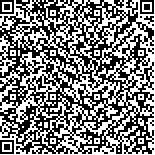刘莹,桂裕昌,黄潇潇,等.经颅直流电刺激治疗不完全性颈段脊髓损伤的临床效果及其分子机制初探[J].中华物理医学与康复杂志,2020,42(3):209-214
扫码阅读全文

|
| 经颅直流电刺激治疗不完全性颈段脊髓损伤的临床效果及其分子机制初探 |
|
| |
| DOI:DOI:10.3760/cma.j.issn.0254-1424.2020.03.005 |
| 中文关键词: 经颅直流电刺激 脊髓损伤 长链非编码RNA |
| 英文关键词: Transcranial direct current stimulation Spinal cord injury Long chain non-coding RNA |
| 基金项目:国家自然科学基金(81960417,81901394);广西自然科学基金(2016GXNSFBA380020,2018GXNSFAA138010,2018GXNSFAA050033);广西医疗卫生适宜技术开发与推广应用项目(S2018021) |
|
| 摘要点击次数: 5895 |
| 全文下载次数: 7183 |
| 中文摘要: |
| 目的 探讨经颅直流电刺激(tDCS)对不完全性颈段脊髓损伤的疗效,分析脊髓损伤相关长链非编码RNA(LncRNA)变化水平与神经功能恢复的相关性。 方法 利用随机数字表法将46例不完全性颈段脊髓损伤患者,随机分为tDCS组(治疗组)、对照组(伪刺激组)。于治疗前、治疗8周后分别采用美国脊髓损伤协会(ASIA)标准、功能独立性(FIM)量表及改良Barthel指数(MBI)进行评分;脊髓神经生理评价采用运动诱发电位(MEP)、体感诱发电位(SEP)进行分析。对研究对象的血清进行qRT-PCR检测,分析tDCS干预前后LncRNA-MALAT1、MIAT、GPNMB、LILRB4和SCD1的表达水平,并将LncRNA表达水平与MBI进行相关性分析。 结果 治疗8周后,tDCS组患者轻触觉、针刺觉、运动、FIM及MBI评分较治疗前及对照组显著增高,差异具有统计学意义(P<0.05);tDCS组MEP中枢运动传导时间(CMCT)、SEP中枢传导时间(CTT)较治疗前及对照组明显降低,差异具有统计学意义(P<0.05);tDCS组LncRNA-MALAT1、MIAT相对表达水平较治疗前及对照组增高,差异有统计学差异(P<0.05),而LncRNA-GPNMB、LILRB4和SCD1相对表达水平差异无统计学意义(P>0.05);tDCS干预后LncRNA-MALAT1、MIAT相对表达水平与MBI正相关(相关系数分别为0.810和0.803,P<0.05)。 结论 tDCS能促进不完全性颈段脊髓损伤患者神经功能的恢复,其治疗机制可能与上调LncRNA-MALAT1、MIAT表达相关。 |
| 英文摘要: |
| Objective To investigate the clinical effect of transcranial direct current stimulation (tDCS) in treating incomplete cervical spinal cord injury, and to explore the possibility of a relationship between the expression of long chain non-coding RNA (LncRNA) and neurological recovery after such injury. Methods Forty-six patients suffering from incomplete cervical spinal cord injury were randomly divided into a tDCS group and a control group, each of 23. The American Spinal Cord Injury Association (ASIA) standard, a functional independence scale (FIM) and the modified Barthel index (MBI) were used to evaluate functional changes before and after 8 weeks of treatment. The neurophysiological evaluations of the spinal cord injury were in terms of somatosensory evoked potentials (SEPs) and motor evoked potentials (MEPs). The expression of the LncRNA-MALAT1, MIAT, GPNMB, LILRB4 and SCD1 genes was quantified before and after the intervention. The relationship between the expression of LncRNA and MBI was then further explored. Results The average central motor conduction time (CMCT) of the MEPs and the average central conduction time (CTT) of SEPs in the tDCS group were significantly lower than those before treatment and significantly faster than those of the control group after the treatment. The relative expression levels of LncRNA-MALAT1 and MIAT in the tDCS group were significantly higher than those before treatment and among the control group after the intervention. However, no significant differences were observed in the average expression of the LncRNA-GPNMB, LILRB4 or SCD1 genes. After tDCS the relative expression levels of LncRNA-MALAT1 and MIAT were positively and significantly correlated with MBI scores. Conclusions tDCS can promote the recovery of motor and sensory functions after incomplete cervical spinal cord injury. The underlying mechanism may lie in the up-regulation of LncRNA-MALAT1 and MIAT expression. |
|
查看全文
查看/发表评论 下载PDF阅读器 |
| 关闭 |